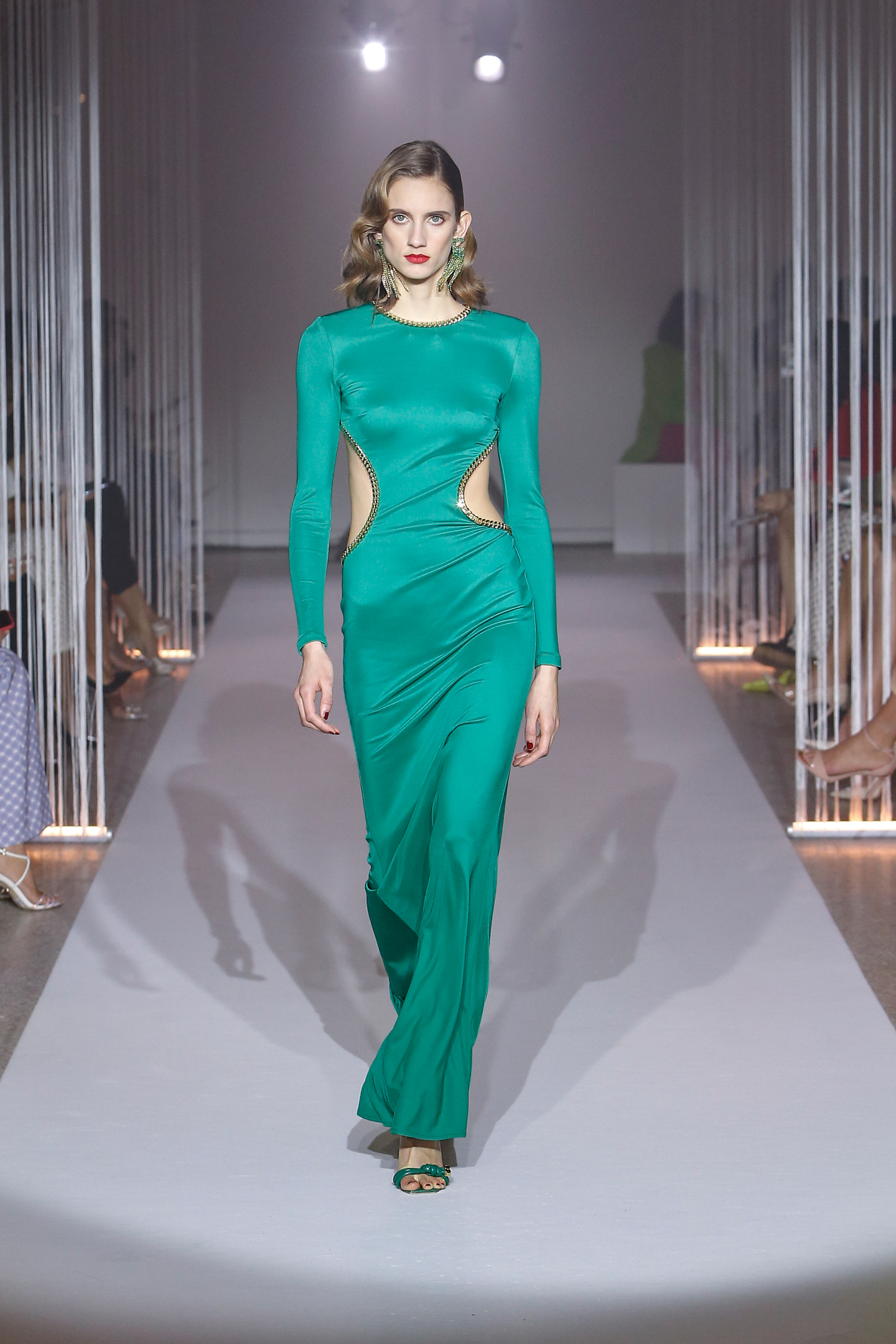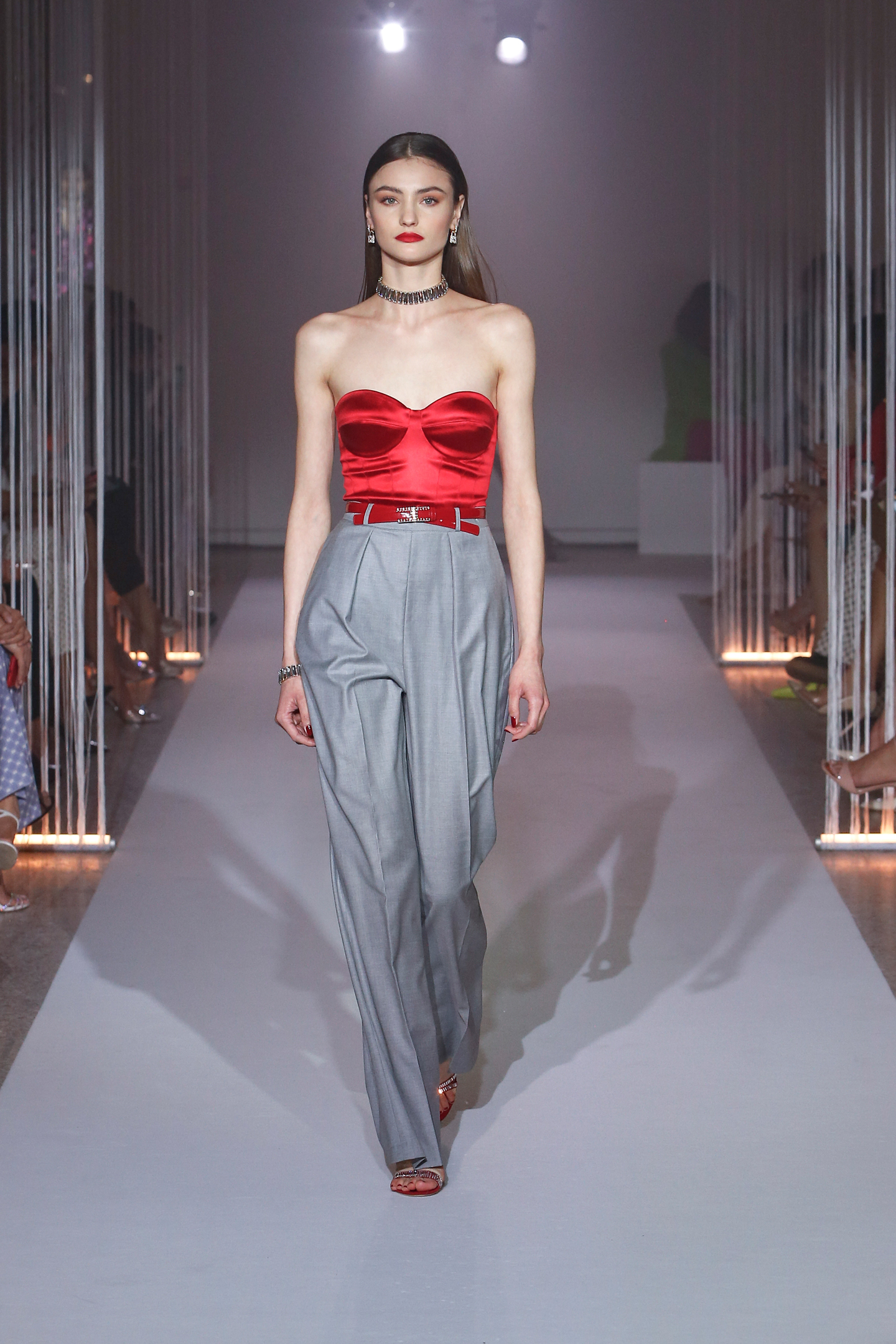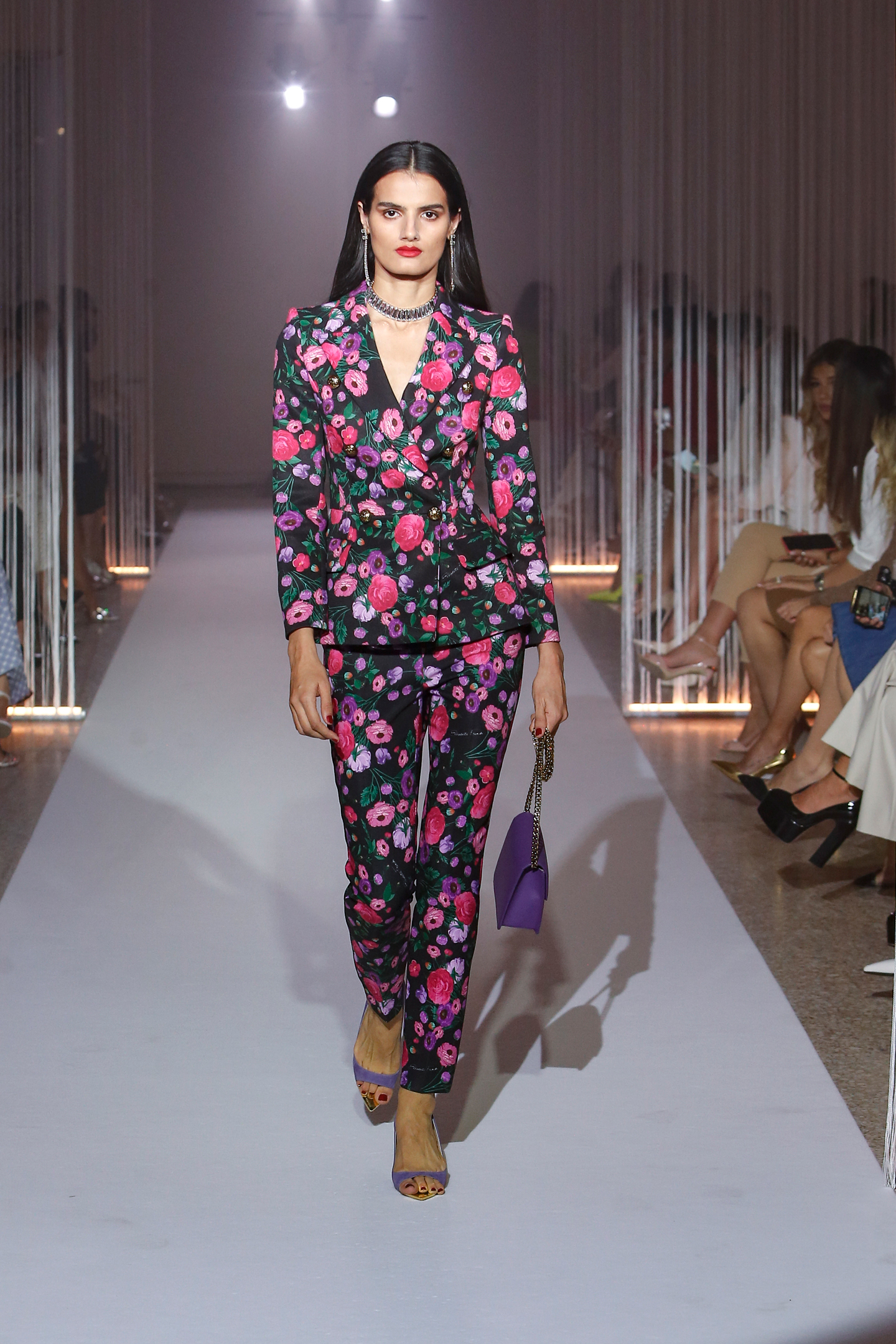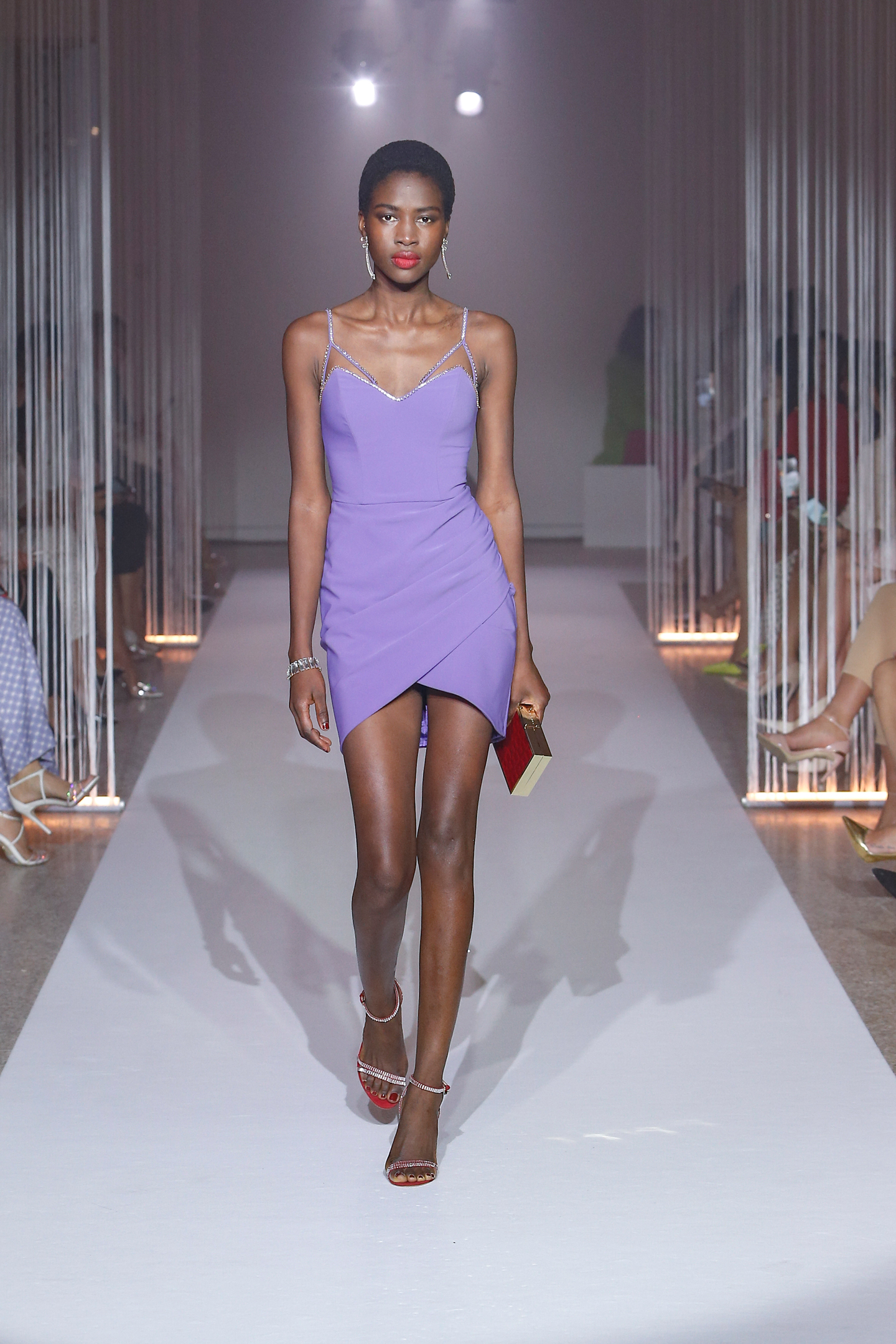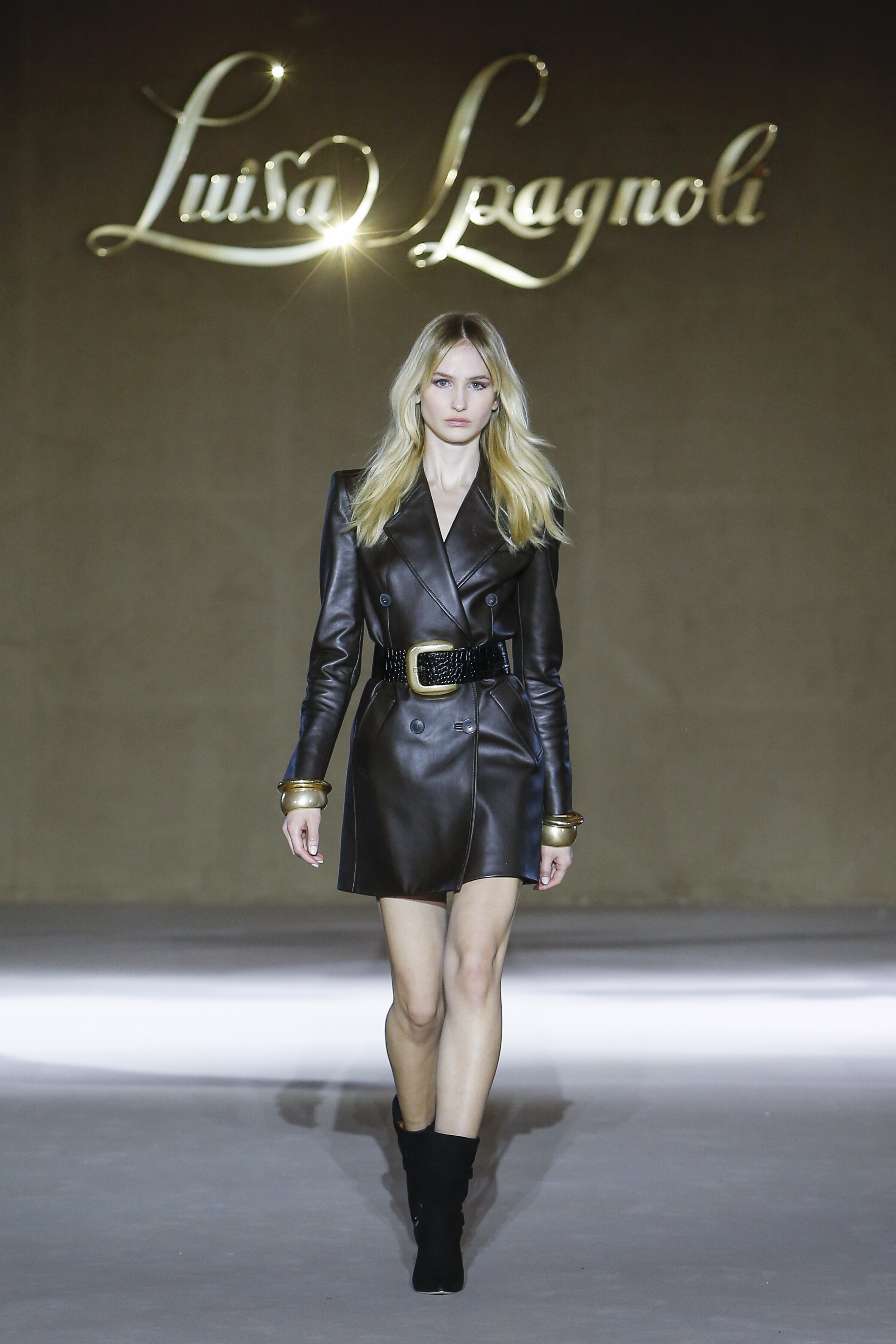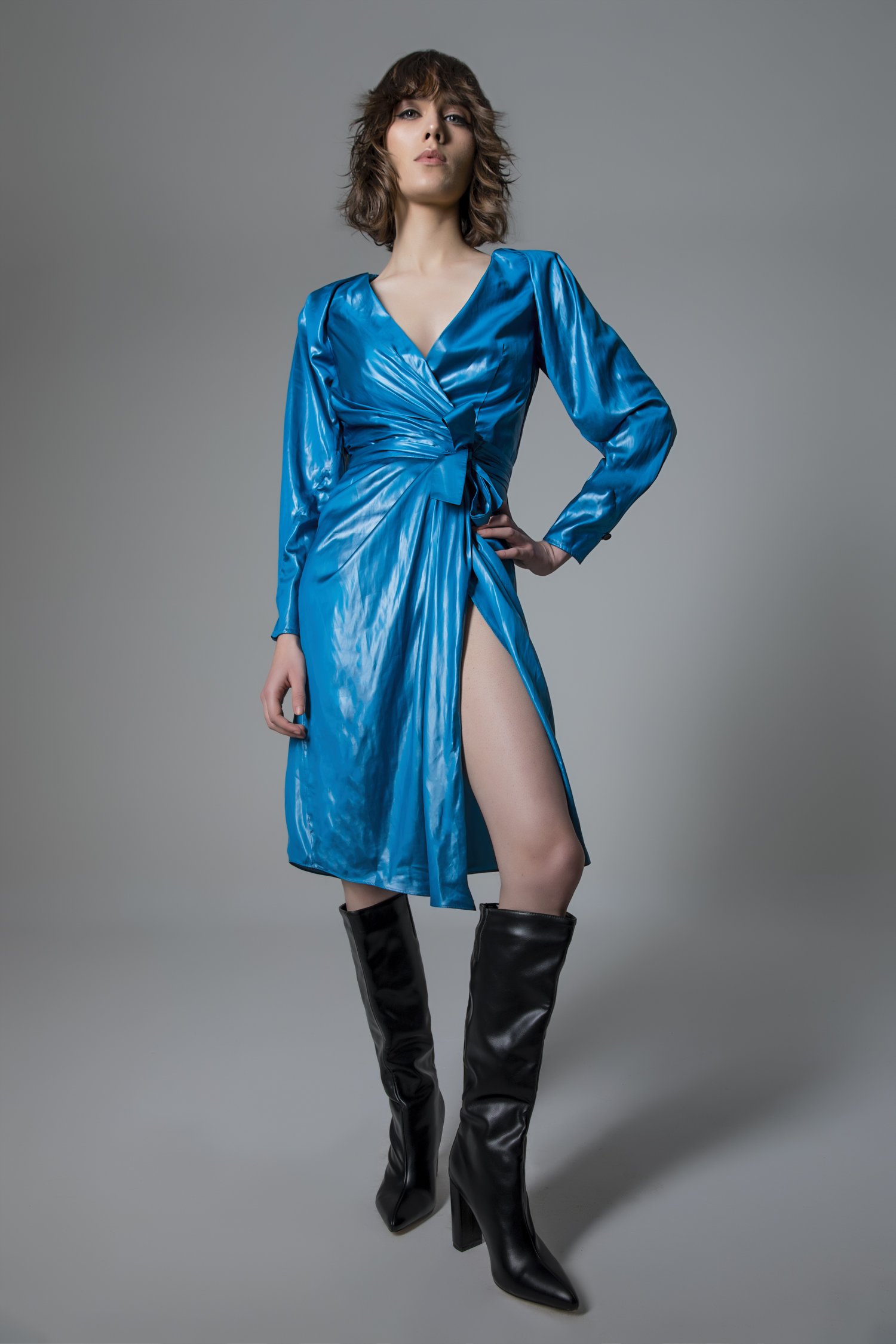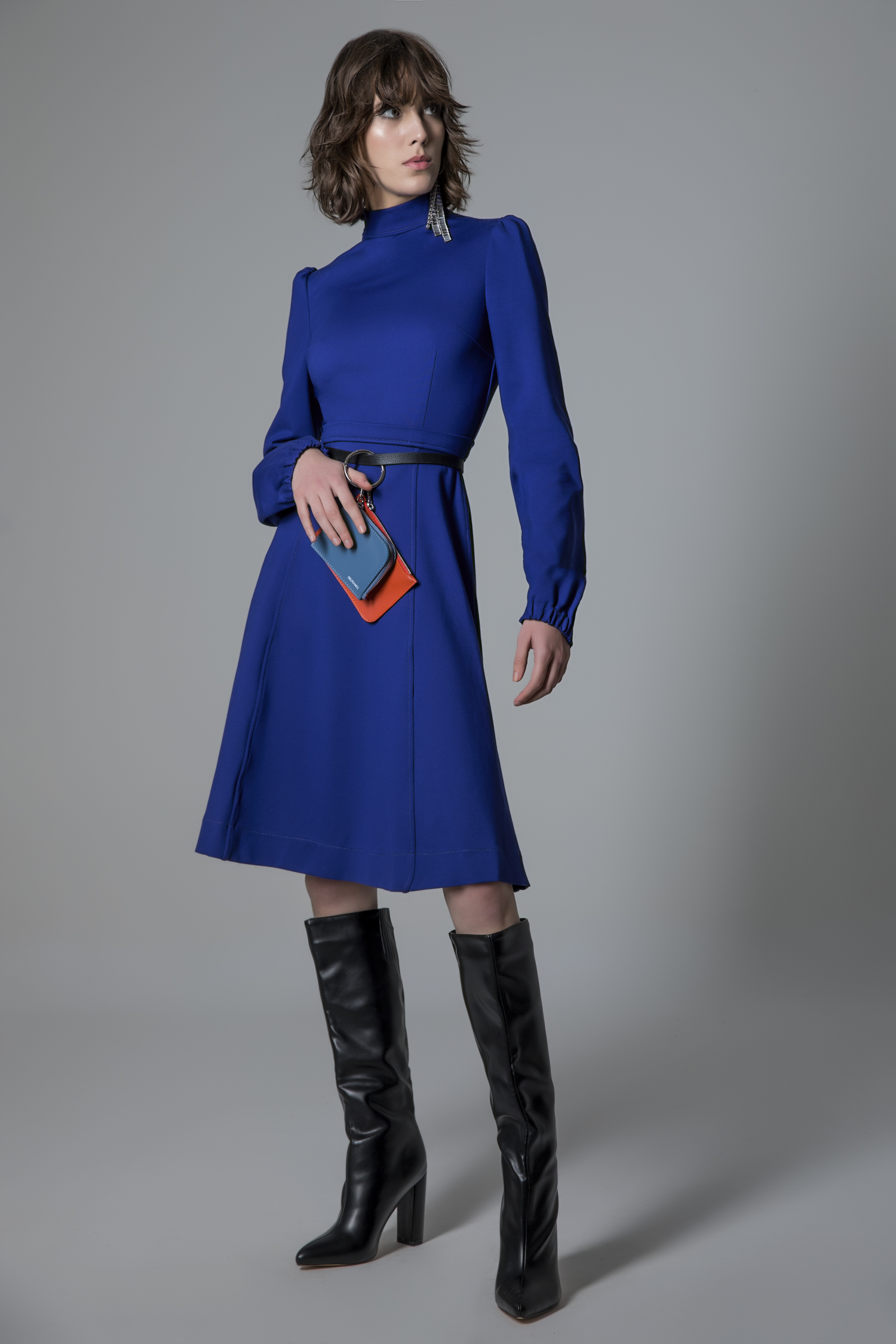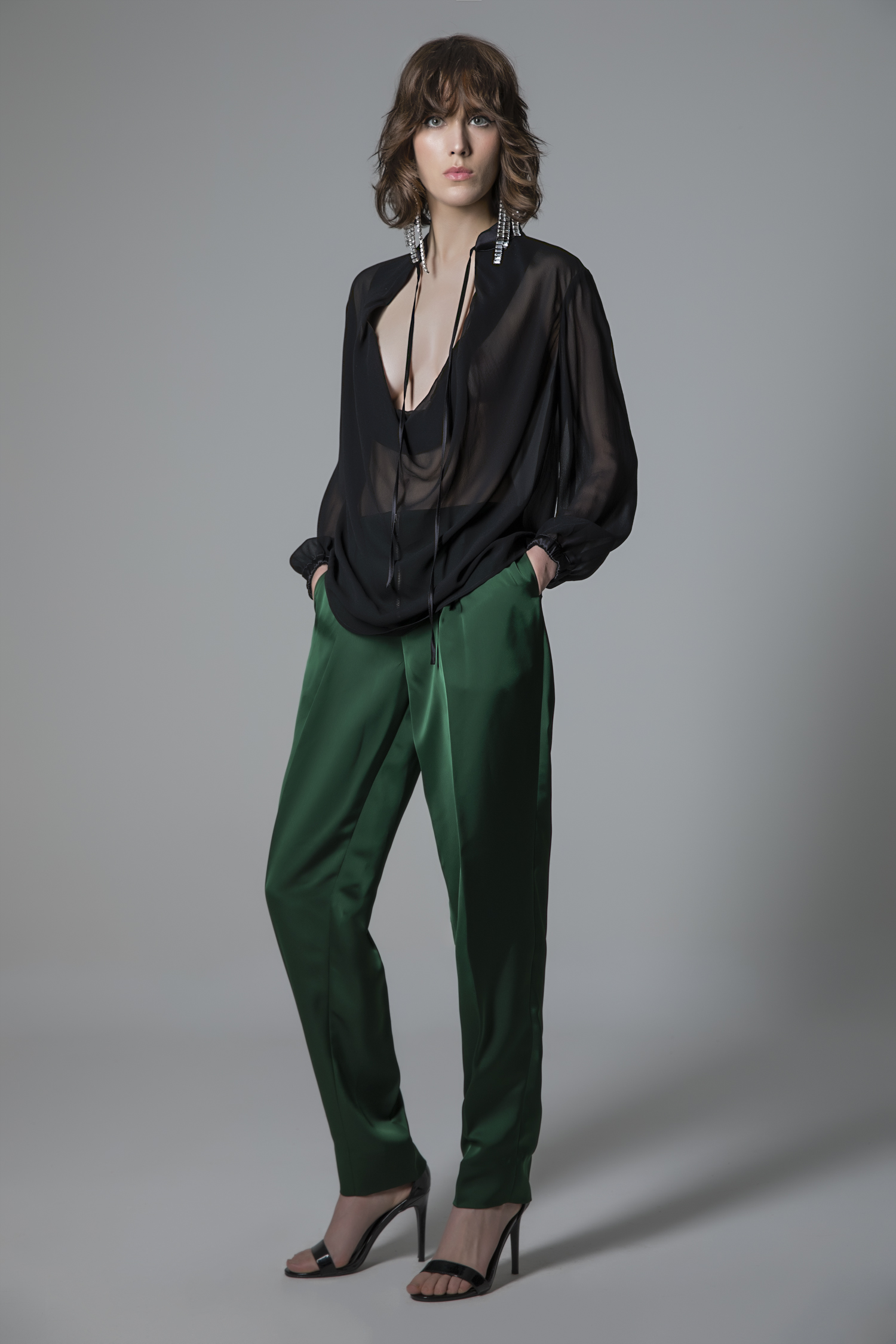Nonetheless, a bit of normality came back to the fashion presentations although the “green pass” of health or vaccination was necessary for some events. The Italian fashion designer Elisabetta Franchi presented the ready‑to‑wear collection for autumn and winter of 2022/2023 in the Museum of the Permanent on 25ᵗʰ February 2022. Revolutionary, authentic and prestigious were the women for Elisabetta Franchi. Professional fashion models who interpreted a clichéd version of femininity were the sole cast no longer. A crew of contemporary and relatable women, who represented and embodied the brand around the world every single day, also walked on the runway in order to promote the idea of authentic womanhood in all its facets. These women with their different personalities but with a strong identity and an always‑relevant style were the designer’s true muses. The new collection marked a new chapter in the history of the brand thus. Body‑con dresses were an ode to beauty and pride. Passion and the strength of the female spirit set the runway on fire; red velvet engaged in a dance with jet black while emerald green brilliantly shone.
The eclectic collection by the Italian fashion designer Luisa Spagnoli was a bold statement for female power in order to celebrate women’s charming sensuality; it was about self‑love, confidence and seduction on 27ᵗʰ February 2022. Soft and precious knitwear was in the focus here. Punto di Milano stitch knit appeared on mini‑skirts and petite cardigans imbued with a youthful vibe, while oversized cardigans of cable knit and tricot had tube frocks of rib‑knit. They were juxtaposed to chunky turtleneck sweaters, coats and vests with intricate intarsia patterns in order to be mixed and matched with gusto. Pencil skirts in vibrant tones such as emerald green were paired with biker jackets of double‑face wool. Strong-shouldered cropped blazers were parts of moiré pantsuits; leather options with sculptural shoulders added some edginess to the suiting component. The imposing baroque colonnades of the Rotonda della Besana in front of the former Church San Michele ai Nuovi Sepolcri left spare to exalt the richness of meticulously handcrafted intarsia of lurex yarns and jacquard patterns at gowns with pointy shoulders and a plunging V‑neckline. Sparkly mini‑dresses with intriguing see‑through effects, demure one‑shouldered dresses of silk taffeta with asymmetrical drapes and strapless wrap frocks with sensual front slits rendered in a variety of gemstone nuances. Apart from this, folk flourishes and embellishments met eye‑catching primary colours. Body‑hugging silhouettes exuded a cocooning feeling. Biker‑inspired heeled boots, thick waist belts with golden buckles, puffy golden bangles and crocodile embossed oversized clutch bags, some with knitwear details, were the sophisticated and “cool” accessories.
Timeless beauty, without formulas but as an absolute idea, was the topic for the Italian fashion designer Ermanno Daelli. He showed a collection of his apparel brand “ERMANNO SCERVINO” without nostalgia but full of harmonic tensions in the Palazzo Spinola, the residence of the Milan gentlemen’s club “Società del Giardino”, on 26ᵗʰ February 2022; contrasts in new harmonies, a comparison between masculine and feminine shapes as well as a progressive breaking down of barriers were the results of a dialogue between the rarefaction and the preciousness of couture and the world of sport. So the female bodies, wrapped in sheath dresses of leather or short dresses of velvet or lace, protected by large coats, down jackets or shearling jackets, stood on high heeled shoes or on the massive soles of softly martial boots. Swarming gleams of chenille embroideries created tactile effects. A graphic silhouette surrounded double‑breasted suits of velvet; it became voluptuous at long dresses with sparkling sequins and at leather petticoats. The tension of opposites was seen when lace was carved into leather, when bustiers and brassieres were worn with masculine suits and when impalpable dresses were worn under oversized parkas. Silk and wool were further materials. Bright tones of periwinkle blue, turquoise blue, green and pink accented black and white.
The collection „Lar Doce Lar“ by the Portuguese fashion designer Alexandra Moura — it means: home sweet home — did an introspection on what home represented to each one, namely home as a comfort zone or safe haven which brought a balance into life. The fabrics and the cloth prints invoked in each person’s imaginary references of various elements of the home memorabilia. The gurgle felt as in the blankets, while the cloth with the cow motif and the tartan knitwear traced back to the homely rugs and blankets. The faux leather related to leathered capitonné sofas and armchairs. The “drapes” in silk satin and the flip-flops were a highlight in the event site “CERESIO|7” on 27ᵗʰ February 2022. The bags looked like cushions. In contrast to a classic style, the urban side consisted of serge de Nîmes and of silhouettes which alluded more to streetwear.
Home was also a matter for the Italian fashion designer Simona Marziali with her brand “MRZ”. Interior architecture and private environment were the sources of inspiration; home as a place of life appeared in terms such as home‑office, home‑gym, home‑cinema and home‑shop. Minimalist design with its power of simplicity, blended with jacquard patterns from furnishing elements, became a “chorus of dissonances”. Sartorial charm and sporty comfort came together in perfect harmony. Knitwear was the protagonist of the collection “The body is a place”. The suits, entirely made of knit, had a masculine allure. Cashmere wool was the material of the essential garments. In contrast to the knitwear proposal, there was a somewhat rough‑looking fabric and eco‑leather with unusual inserts and cuts, a texture which refered to design objects. Elaborate stitches, a “casentino” finish or a floating yarn effect enhanced the three‑dimensionality of the material. With a link to sportswear, extreme volumes, pleats and zipper details became decorative elements and underlined the concept of a “relaxed elegance”. Abstract tones, taken from furniture and interior upholstery, such as beige, anthracite grey, clay brown, burgundy red, blue, and black were mostly used in a monochromatic way or treated in contrast; bright and lively shades of denim blue and green embellished the ensemble. The combination of different textures and structures created a balance between practicality, functionality, refinement and femininity. The collection full of visual contrasts stood between certainty and progress on 23ʳᵈ February 2022.
The pandemic effected not only changes in the design of collections but also in the organisation of brands. The Olmar & Mirta Spa, based in Quistello near Mantua, led by its chief executive officer Gianbattista Tirelli, had signed a multi‑year production agreement with the Italian fashion designer Alice Gentilucci in order to invest in a concentrated production for her brand “ALABAMA Muse” and to guide the brand — with a network of stores in Italy, Switzerland, France, California and Texas — towards a stronger presence on the domestic and American markets. Distribution had also changed with the Twentyfourseven srl for its Milan showroom “247”. The American film directors David Lynch and Quentin Tarantino as well as the “Swinging London” in the British motion picture “ABSOLUTE BEGINNERS” from the year 1986 and the “enfant terrible” Margot Tenenbaum in the American motion picture “The ROYAL TENENBAUMS” from the year 2001 stood for the rebellious underground soul of Alice Gentilucci’s new collection with fur, totally made in Italy, which was digitally shown on 23ʳᵈ February 2022. The fur coat, the iconic garment par excellence, appeared in a cruelty‑free, an animal‑friendly and a sustainable version for wearable conscious luxury. The textural preference for long fur such as fox, beaver, tiger and lamb as well as patchwork and intarsia for nuances were a hallmark of the brand. Solid tones such as honey yellow and orange, vibrant light shades of pink, green and purple as well as the sophisticated classicism of black and white were the vivid colours for contrasts even in the details and linings. Alice Gentilucci liked experiments; she had a lot of fun by mixing furs and choosing daring; she used unusual chromatic variations in oder to give a cinematic image to the oversized garments. Vertical tiger inserts interrupted the long beaver fur at a coat while lilac and orange inserts accentuated the striking aquamarine kidassia fur at another coat. There was also a midi‑vest with a patchwork motif of different furs in different shades.
The pandemic left its mark on people’s lives, too. It also influenced how they dressed. Trends no longer come to the fore, but one's personality. The collection “CHAOS GENDER” by the fashion designer Delfrance Ribeiro from Brazil allowed women to express themselves by playing in creating their own look. It concluded suits with voluminous skirts embellished with embroidery. Sporty jackets of technical fabrics could be combined with tapered high‑waisted trousers. Jersey bodices could be paired with overlapping skirts. A combination of corsets and trousers of jersey, cotton, wool or shantung silk offered versatility from day to night. Geometric cuts on the bias and bright colours characterized dresses of jersey. Embroidered jackets completed the collection in order to to feel safe on hectic days.
The Mexican fashion designer Antonio Ortega, whose couture collections had been seen in Paris till now, showed a ready‑to‑wear collection in Milan for the first time; the installation took place in the theatre “Gᴇʀᴏʟᴀᴍᴏ” on 26ᵗʰ February 2022.




